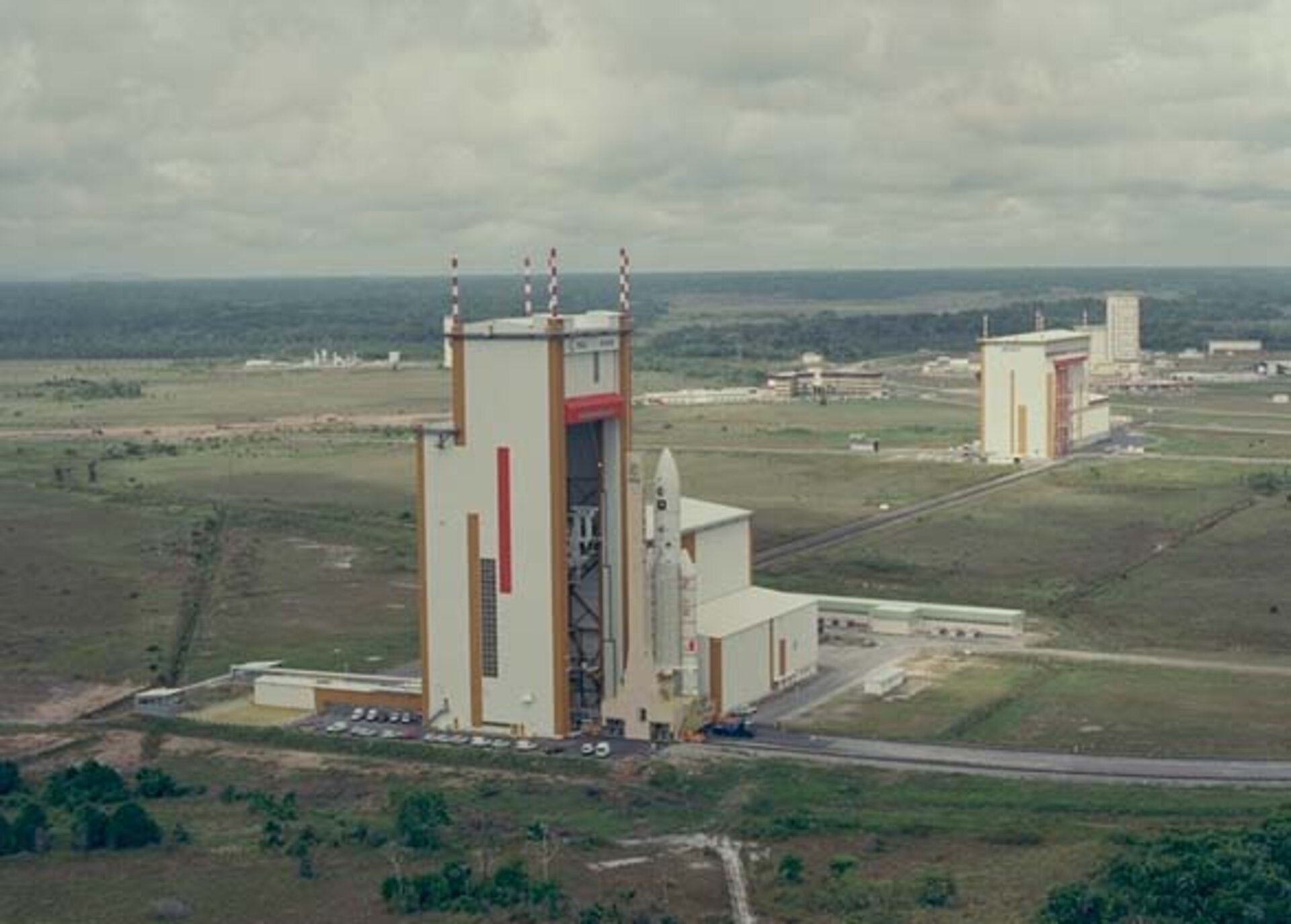Ariane 5: A unique launcher, iconic missions – ARD
11.08.2023

Ariane 5: a career spanning 27 years and 111 successful launches. Ariane 5 lifted off for the last time on July 4. We continue our series highlighting some of the rocket’s most significant missions.
Today’s space community is increasingly conscious of its responsibility to be safe and sustainable in its activities. Re-entry – managing end-of-life satellites, recuperating launchers, or mastering homecoming for crewed or cargo spacecraft – is an important element in this endeavor. Here we look back at a crucial mission undertaken by the now-legendary Ariane 5 rocket which contributed to setting us on this path.
On October 21, 1998, an historic event took place in the world of space. Shortly after 8 pm, a capsule splashed down into the Pacific Ocean after a 30,000-km voyage, picked up by navy ships which had been on the lookout for its arrival.
This was ARD (Atmospheric Reentry Vehicle), a passenger on the Ariane 5 rocket which had taken off only one hour, 41 minutes and 14 seconds previously and which had made the journey back to Earth.
The first guided sub-orbital reentry vehicle built, launched and recovered by Europe, ARD was a major milestone in the development of European space and set the stage for the future of space exploration. With this mission, European industry demonstrated that it had the capability to launch a vehicle into space and to recover it safely. Previously only the USA and Russia had shown that they had this technology.
Europe had built satellites for all scientific, governmental and commercial applications, and provided an access to space via its Ariane launchers, but with the ARD mission, Europe and Ariane undertook a complete spaceflight cycle, from launch to landing, using its own expertise exclusively for the first time. This European Space Agency programme constituted the first fundamental step towards the possibility of development of future European space vehicles with a wider spacefaring vocation.
Ariane 5 performed impeccably for this flight 503 – we should not forget that it was also the significant hurdle of its third and final qualification flight. Taking off from the European spaceport in Kourou at 13:37 (local time), after the separation of the boosters and the fairing (2 min 23 sec and 3 min 13 sec respectively into the flight), and the separation of the main stage at 9 min 59 sec, ARD was propulsed from the rocket at 12 min 2 sec for its return journey to Earth.
From an altitude of 830 km, during its descent of around an hour and a half through the atmosphere ARD with its sophisticated suite of sensors and instruments transmitted more than 200 critical parameters for analysis of the flight, re-entry process, (extreme) temperature factors on the heatshield (up to 900°C during reentry), aerodynamic loads, vibrations, and the behaviour of its onboard equipment. For the final approach, at an altitude of 14 km, and still travelling at a speed of over 800 km/h, ARD deployed its braking parachutes so that it was able to make a gentle splashdown, which it performed exactly within the 5 km target zone.
Post-retrieval scrutiny revealed that ARD’s nose cone and thermal protection heatshield had remained intact throughout its mission. Europe had successfully performed its first controlled atmospheric entry mission. The savoir-faire that generated ARD is now being applied to future space missions with ambitions to fully exploit the potential of space for life on Earth and beyond.
And it was Ariane 5 that made it possible.